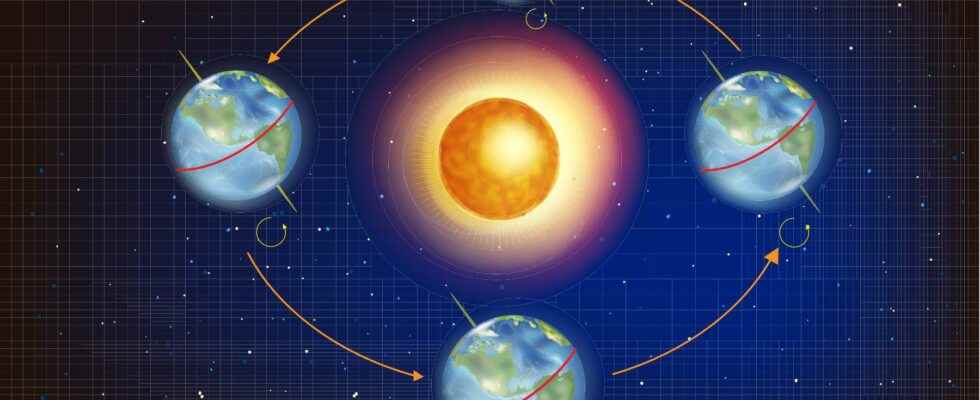The perihelion (from the Greek perishedaround, and helios, sun) is the point where a planet is at the minimum distance from the Sun. The Earth does not describe a perfect circle around the Sun but follows an ellipse varying between a minimum, called perihelion, and a maximum, called aphelionthe Sun occupying the foyer of the ellipse (for the other star systemsare used the terms of perigee and apogee). When at perihelion, the Earth is about 0.983 AU away from the Sun (about 147 million kilometers), and when at aphelion, it is about 1.017 away. astronomical unit (about 152 million kilometers). There is therefore a difference of 5 million kilometers between these two extremes. The perihelion also corresponds to the moment when the angular velocity of the Earth is the fastest, by virtue of the law of areas.
Why does the date of perihelion vary over time?
Perihelion occurs between January 2 and 5, with aphelion occurring around July 4. The date and time of these points vary over time, due to several phenomena, as explained Paris Observatory on his site. The perihelion and the aphelion are indeed calculated with respect to the centroid Earth-Moon, itself in rotation around the center of gravity of the Sun. Moreover, theorbit of the Earth-Moon barycenter is not Keplerian but undergoes the influence of the other planets of the Solar system. Therefore, the time separating two consecutive passages of the Earth at perihelion (called an anomalistic revolution) is not exactly 365 days but 365.25964 days, i.e. 25 minutes longer than thetropical year (time taken by the Earth to travel its orbit between two spring equinoxes). We therefore observe a progressive shift in the date of the perihelion which advances in the year. Thus, in 10,000 years, perihelion will reverse with aphelion and coincide with the summer solstice.
Perihelion and duration of seasons
Contrary to what one might think, the Earth-Sun distance has little influence on the seasons : it is mainly the inclination of Earth’s axis of rotation which influences whether it is warmer in thenorthern hemisphere in summer and vice versa in winter. On the other hand, the modification of the date of the perihelion influences the length of the seasonsbecause the earth spins faster as it passes the perihelion point. Thanks to this, we currently enjoy longer summers and shorter winters.
The precession of Mercury’s perihelion served to Einstein to develop his theory of general relativity in 1915, whose discrepancy remained unexplained by the sole application Newton’s laws. He was thus able to show that the trajectory of Mercury was influenced by the distortion of the curvature of space-time.
You will also be interested
[EN VIDÉO] What is the Equinox? Along with the winter and summer solstices, the equinox marks the change of season. Day and night then have exactly the same duration, ie 12 hours each.
Interested in what you just read?
